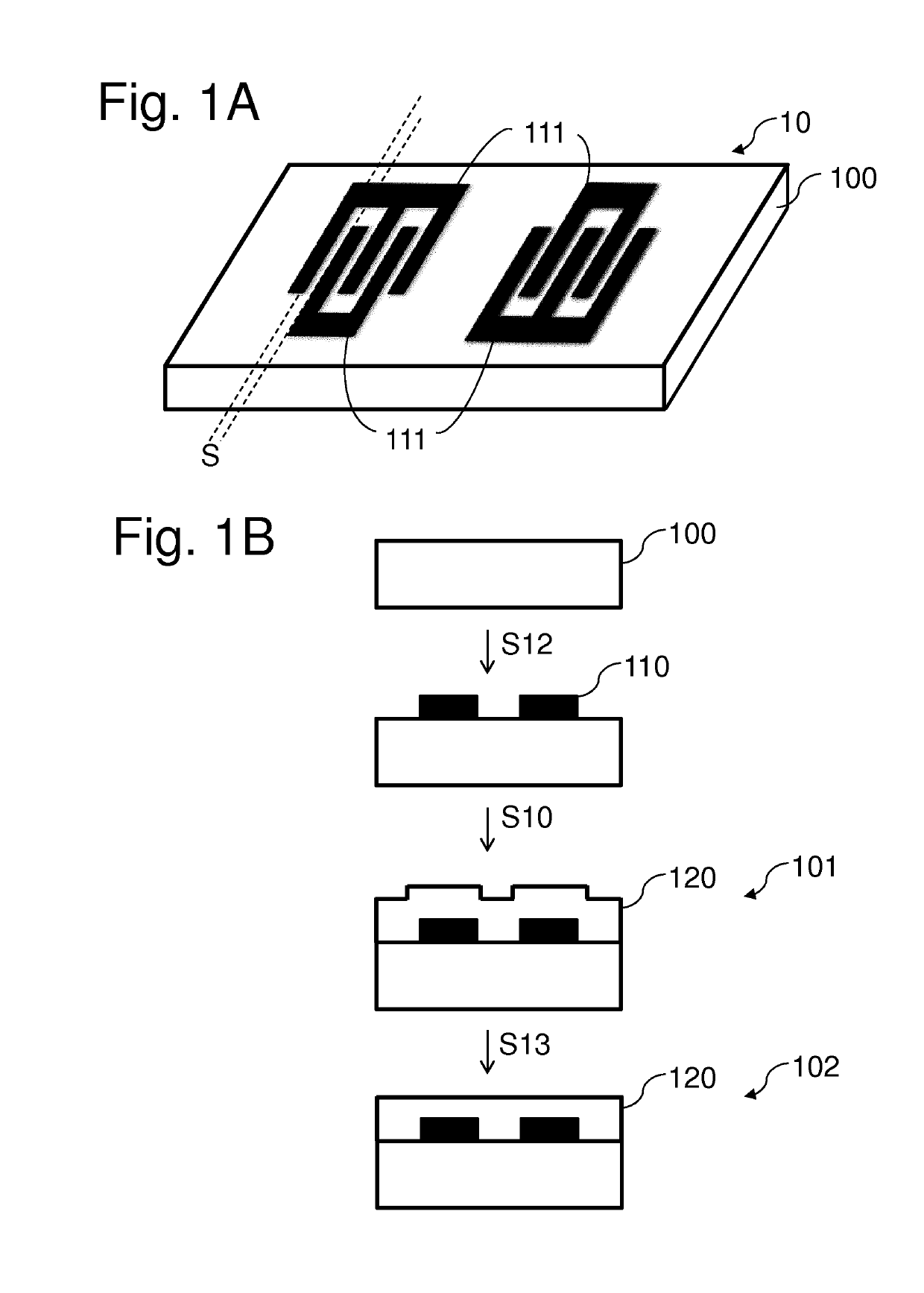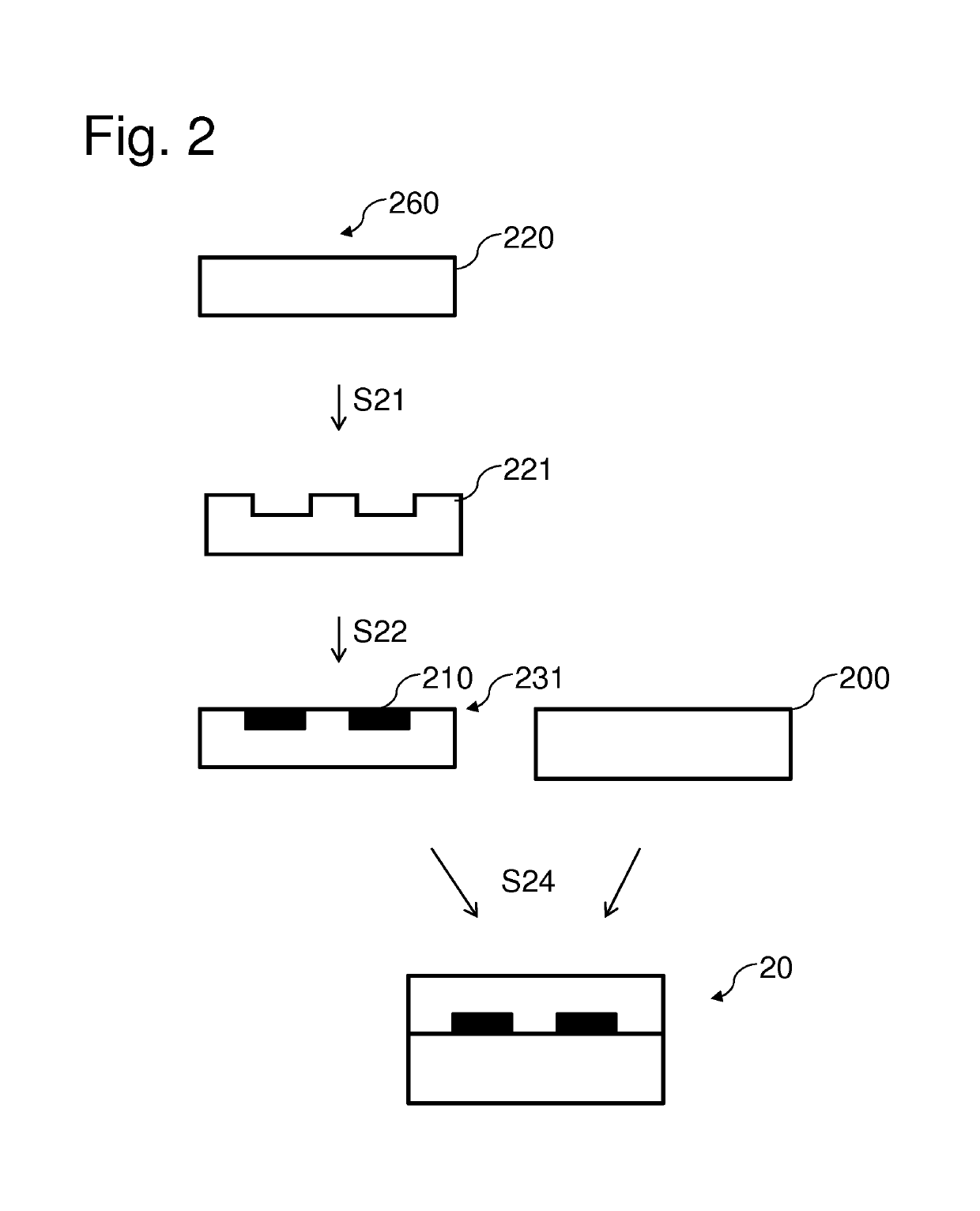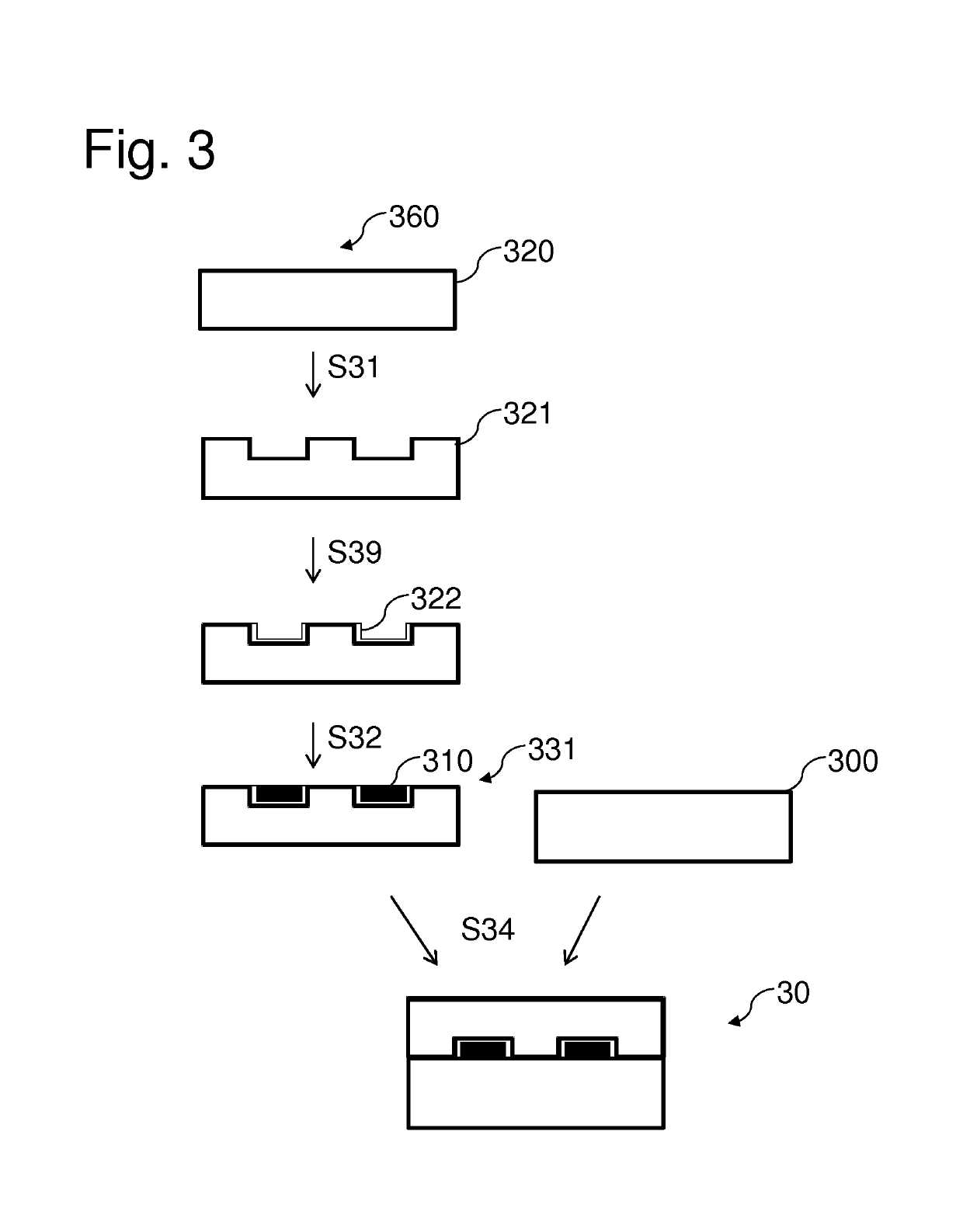Advanced thermally compensated surface acoustic wave device and fabrication
a surface acoustic wave and thermal compensation technology, applied in the manufacture/assembly of piezoelectric/electrostrictive devices, impedence networks, electrical devices, etc., can solve the problems of delamination of metalized parts, wafer breakage, and limited approach, and achieve the effect of low insertion loss
- Summary
- Abstract
- Description
- Claims
- Application Information
AI Technical Summary
Benefits of technology
Problems solved by technology
Method used
Image
Examples
Embodiment Construction
[0048]This disclosure will now be described with reference to specific embodiments. It will be apparent to the skilled person that features and alternatives from any of the embodiments can be combined, independently of each other, with features and alternatives of any other embodiment in accordance with the scope of the claims.
[0049]FIG. 2 schematically shows a fabrication method of a SAW device 20 in accordance with embodiments of this disclosure. An etching step S21 is performed on a dielectric structure 260 comprising a dielectric layer 220, which results in an etched dielectric layer 221 including etched and non-etched parts. A subsequent metallization step S22 is performed to fill up in a flush manner the etched parts of the etched dielectric layer 221 with metalized parts 210, resulting in a metalized dielectric layer structure 231 comprising a dielectric layer 220 comprising electrically conductive means, in particular, metalized parts 210. After the formation of the metalize...
PUM
 Login to View More
Login to View More Abstract
Description
Claims
Application Information
 Login to View More
Login to View More - R&D
- Intellectual Property
- Life Sciences
- Materials
- Tech Scout
- Unparalleled Data Quality
- Higher Quality Content
- 60% Fewer Hallucinations
Browse by: Latest US Patents, China's latest patents, Technical Efficacy Thesaurus, Application Domain, Technology Topic, Popular Technical Reports.
© 2025 PatSnap. All rights reserved.Legal|Privacy policy|Modern Slavery Act Transparency Statement|Sitemap|About US| Contact US: help@patsnap.com



